Garden 2023
Spring
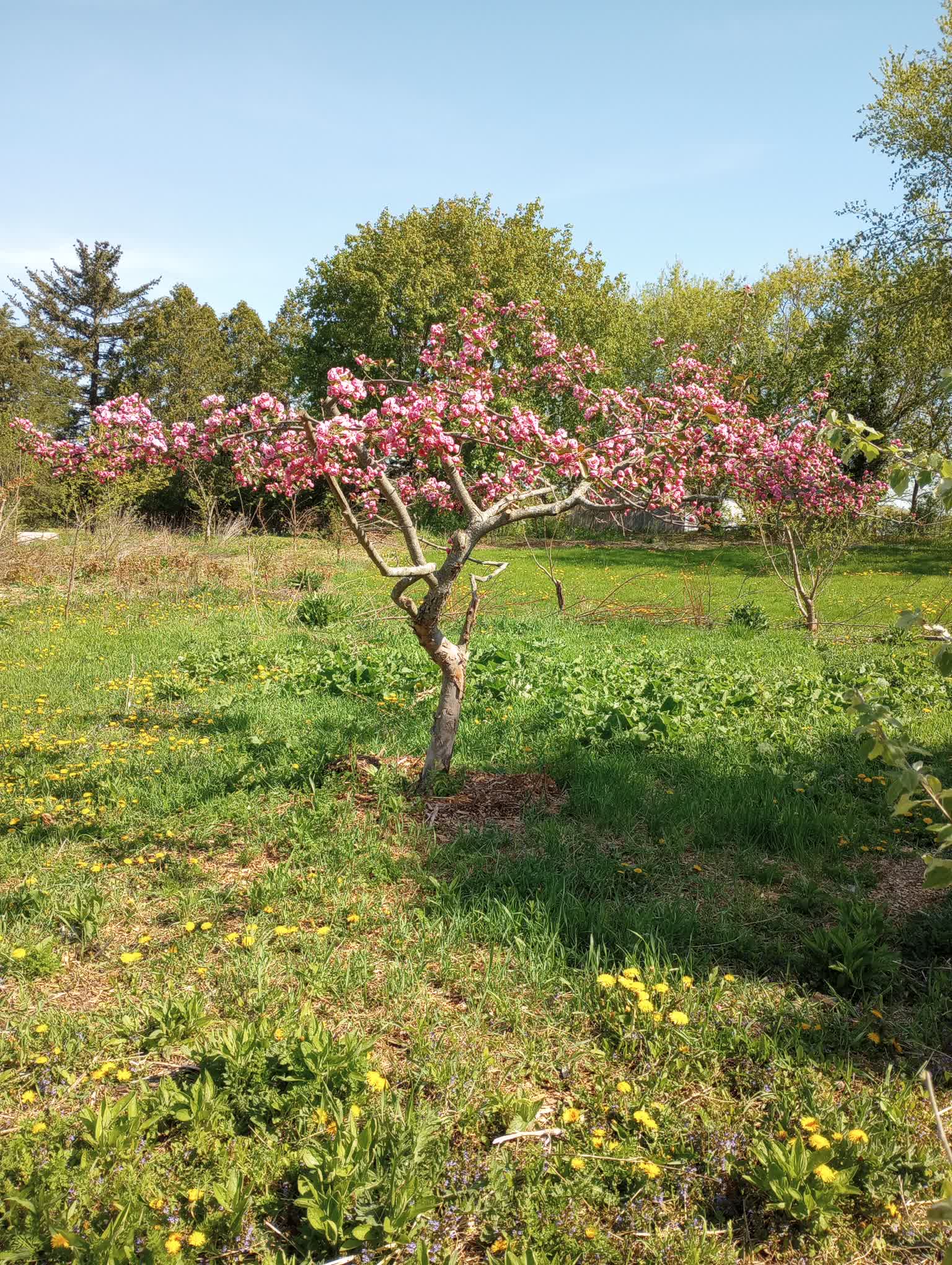
Garden
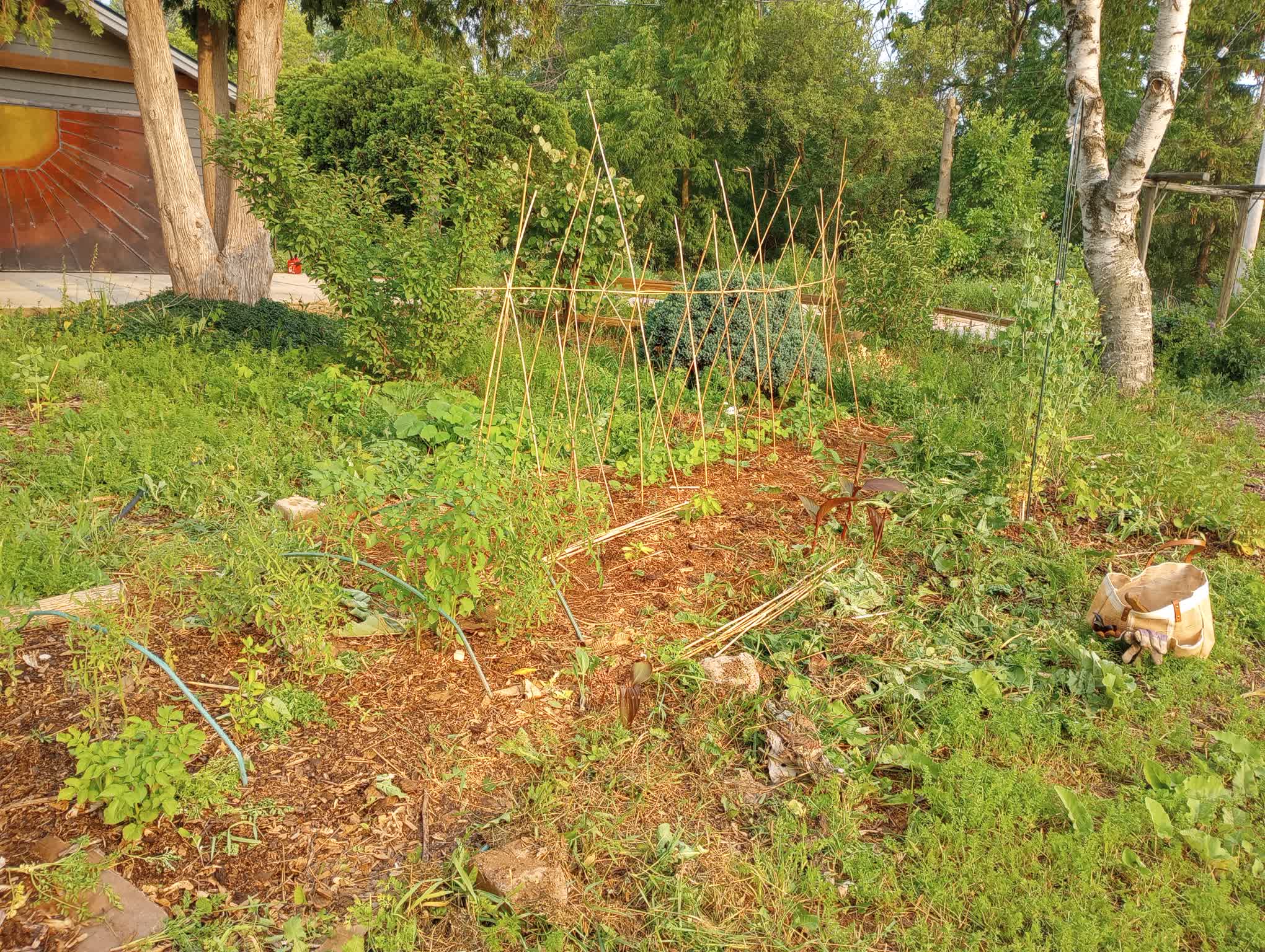
We've scaled back quite a bit this year with the garden, focusing on cultivating only a small area right out front. In addition, we've hauled a couple of loads of horse manure from a nearby small horse farm.
Most of the manure was applied right on top of cardboard which was laid in a single 5ft wide bed spanning about 20 feet.
In it we planted some tomato, tomatillo, hot and bell peppers, beets, kale, potatoes and peas. Later we planted beans, cucumbers and squash.
Next to this bed we've been weeding (there's lots of wild lettuce, burdock, thistle and maple saplings in the area) and replacing with some flowers: sunflower, hollyhock and chamomile. In the area we planted some clearance perennials from the hardware store in along with the other perennial flowers planted there.
We hope to continue to transform the area into self seeding flowers intermixed with fruiting shrubs and other perennials with a stable ground cover.
On the other side of our direct front, we've been transplanting various berry varieties in hopes to establish a more cultivated berry area. Including: strawberries, pineberries, black raspberries red raspberries, tayberries, currants and goji berries. Also we planted a asparagus plants from the farmers market last year. Most did well, the area required more fertility, but thankfully the plants are pretty low maintenance.
We bought way too many potatoes for seeding this year, I couldn't stand to throw away the excess, so I planted some in the food forest further out and some in the rotted chicken manure pile. They all came up and are doing well, especially in the manure pile.
Harvests

There's not much available this time of year, besides sunchokes (which are pretty quite abundant by now, but we're continuing to let them spread). Berries just really started rolling at the end of June, our strawberries have suffered from lack of fertility and care (hopefully this will improve).
So far here's what's fruited: naking cherry, goumi berry, black raspberry, some strawberry, goji berry. In late June, still waiting on: currant, gooseberry, red raspberry, tayberry
Food Forest
This winter was rough for our apple trees, I think I made the mistake of removing some nets too early, so rabbits ate the bark many of the young apple trees. To compensate, I pruned these trees pretty hard. They're leafing out, but not nearly as vigorous as previous years. I just hope they don't rot out, and are able to grow again from the stump! I will definitely replace the netting so the rabbits can't get to them next winter.
I have tried starting some Asian pear seedlings (from last years harvest). I had a decent success rate cold stratifying in the fridge in a bag of dirt, and planting into tall soil modules. I ended up with about 6 in the end (from ~12 successful seedlings) as some failed upon transplant. They're doing alright so far.
I also cold stratified quite a number of peach and apricot seedlings, which didn't sprout as readily as the pears (also I forgot about them). In late June I've put them out on the counter to sprout.
Many of the stone fruit trees around the property I pruned pretty hard. This caused an explosion of growth, that I will likely prune again in summer. I'd prefer if the trees stayed smaller for picking, and ease of future pruning. Some trees seem to be getting leaf curl, a fungal infection. It's not too bad for the most part. I hope the pruning will help let in sunshine and wind to help counteract the infection.
Our old apple tree that is supposed to only fruit every other year is fruiting for it's second year in a row! From my research this habit is likely due to being unpruned, resulting in over fruiting in one year causing the swing in the other direction the following. I think my pruning helped!
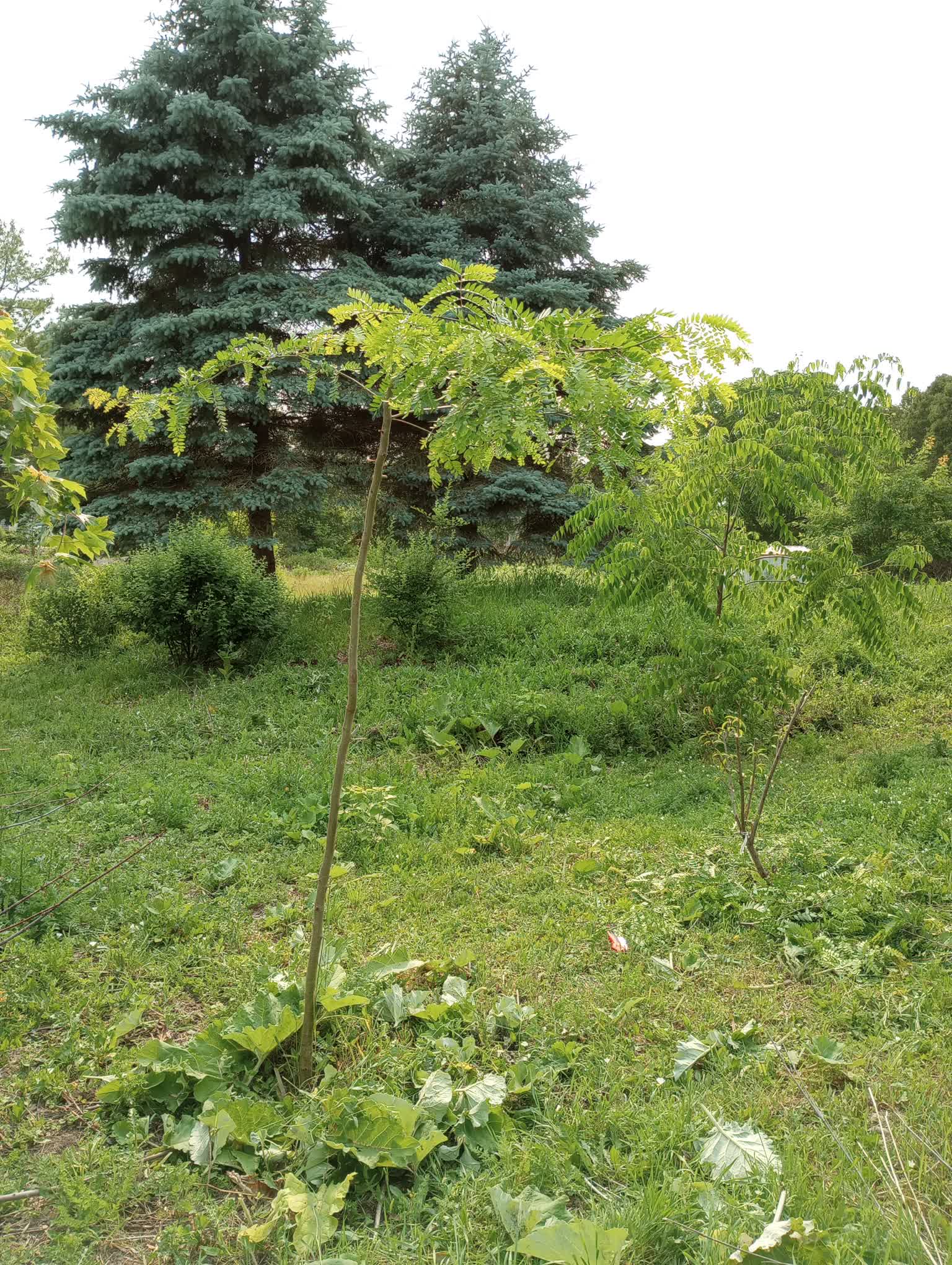
Additionally this year I have been cutting back comfery which has been very prolific to mulch surrounding trees. In addition I've pollarded several of the honey locusts around the property to also much the fruit trees. This has helped keep the soil really moist with minimal weeds.
This year to make things more comfortable I've been pretty diligent with cutting back thistles and other annoying plants with my machete and sickle. In addition I've been mowing more trails through, making it easier to access the groups of fruit trees.
This year is the first year that quince has fruited substantially, I'm looking forward to seeing what it turns out to be like! Also sea buckthorn is fruiting for the first time on a couple of trees.
I pruned the pears back pretty hard as well, and they're responding by putting out lots of new leaves and fruit. This succulent growth is attracting some aphids, but the ladybugs can be seen prolifically cleaning up well enough, I'm not concerned.
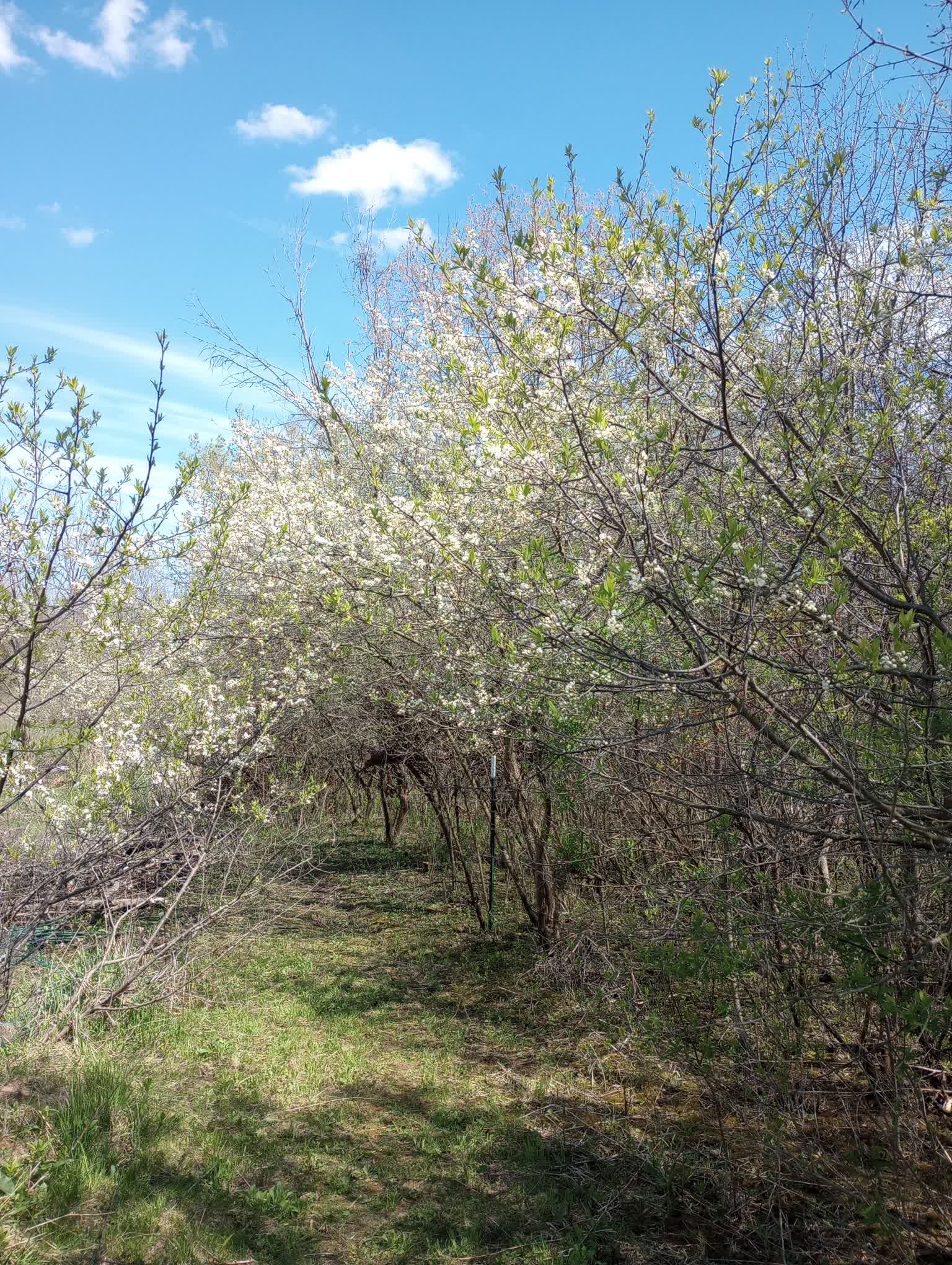
Summer
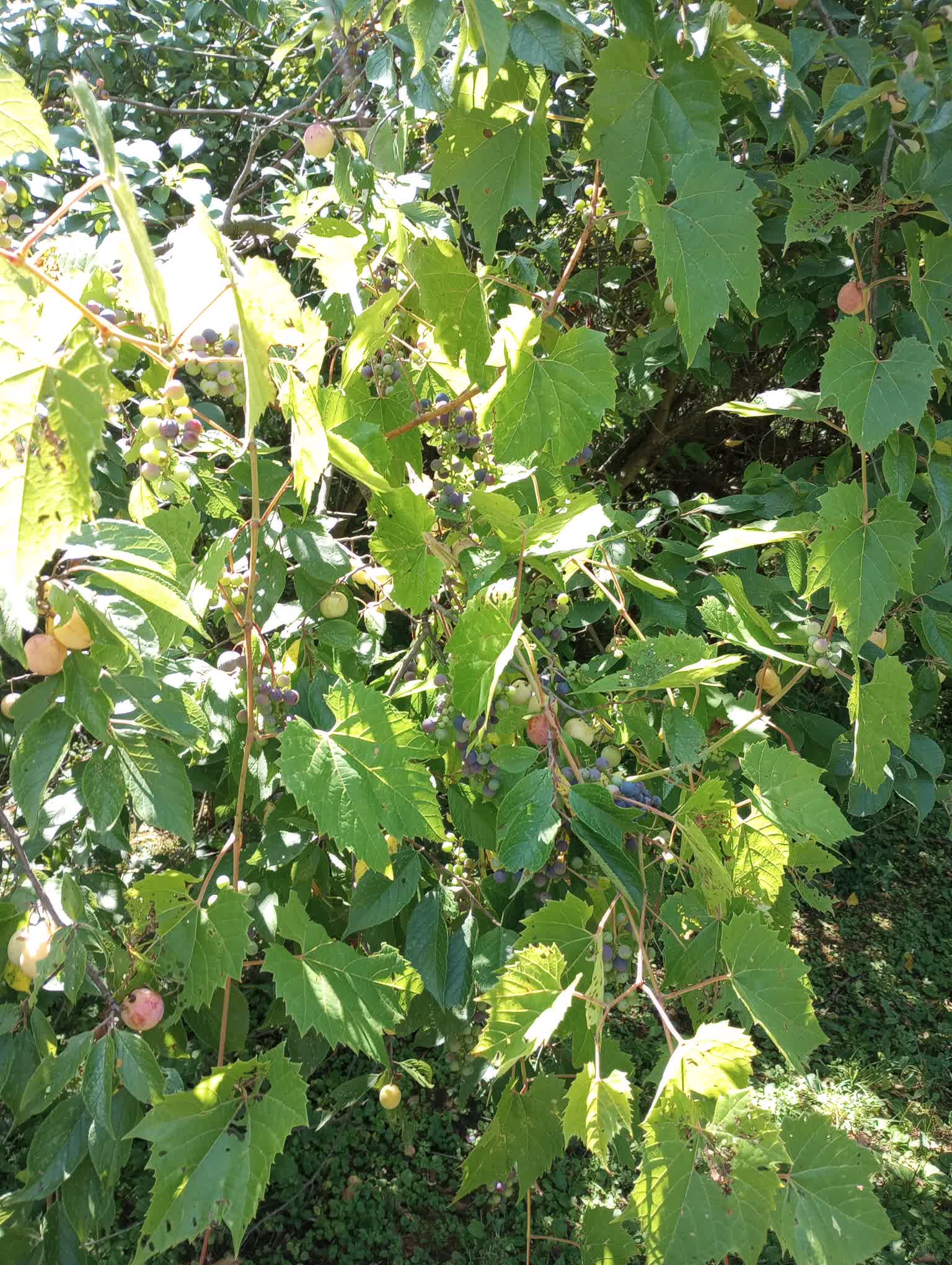
Just some musings from this summer
Intentionally
The theme I set out for this year was intentionally. When we bought this 2.8 acre property in fall 2022, it was wild, and it still is. Like a Midwestern jungle, I love it.
But in the chaos, there is always room for intentionally. It's tricky though, to bring order in the midst of chaos while retaining the character of the landscape. It's actually pretty easy to wipe out all character, just mow everything, apply herbicide & pesticide to anything that looks like it "doesn't belong" and seed turf grass, but that's not my intention.
So what was my intention? To cultivate a comfortable, fruitful, lush place that myself and others would want to spend time in. I also want to accomplish this without becoming reliant on external inputs.
Inspect and Adapt
turns out, coming to this place is a very iterative process, as first of all, I don't know exactly what kind of place I want to spend time in. This is where biodiversity and chaos helps. The landscape is constantly giving feedback, in every season and proving it's value in the ecosystem. Black raspberries show us every spring why I love wandering out back.

But it's not always so obvious how each plant, fungus, insect, bacteria or animal provides value, but it's well known that every one plays an important role. Even noxious weeds, they all proliferate for a reason. Burdock is hated by many, growing in neglected patches behind garages and in lawns, then attaching their velcro seeds onto pets, shoes and clothing. But without burdock opportunistically hitching rides and filling in spots of earth and sunshine, it's not obvious whether those slices would have been filled at all. Bare earth and wasted sunshine is more costly than any noxious weed to an ecosystem.
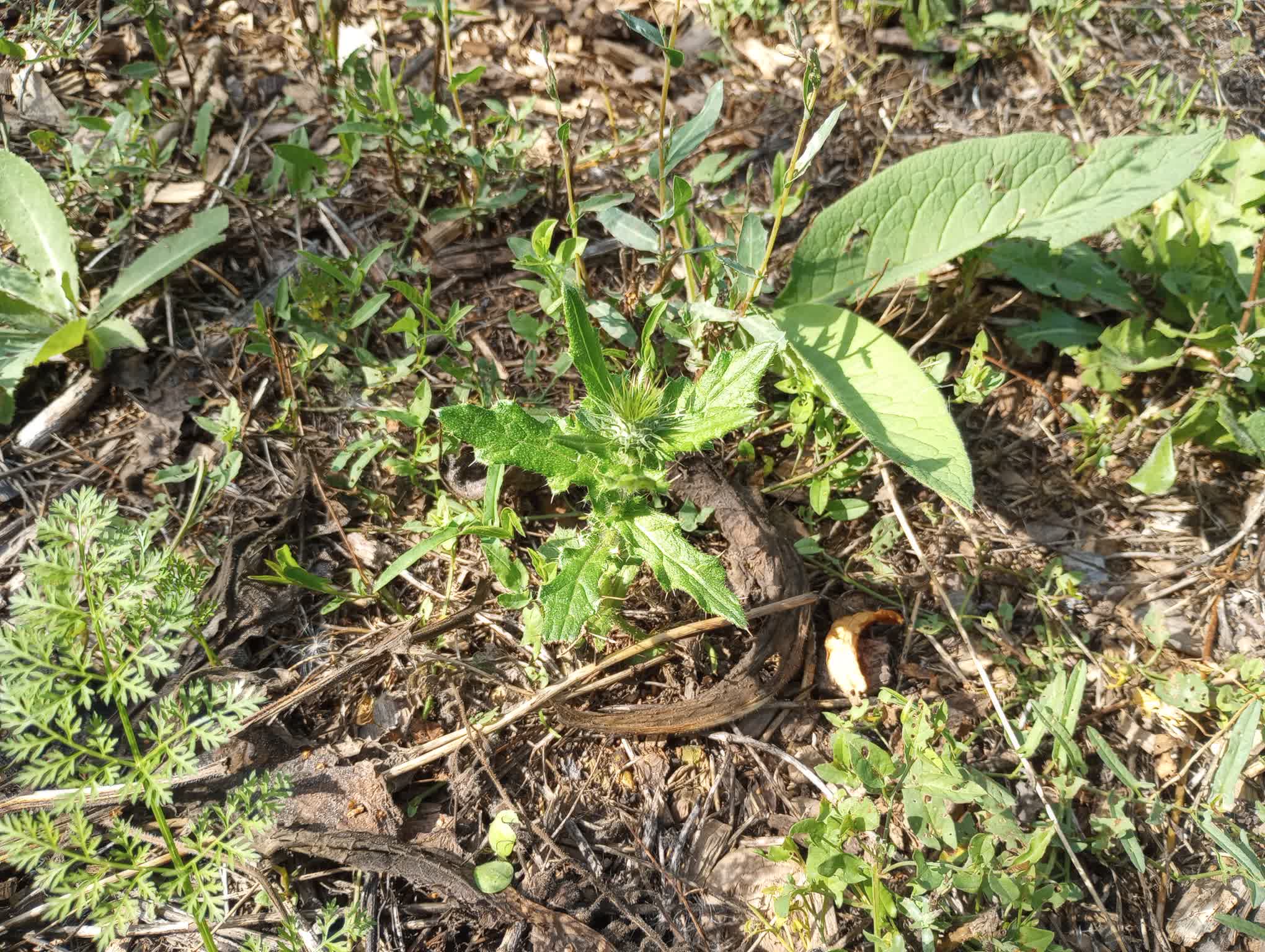
But on the other hand, there are species that establish and steal resources from others, or unnecessarily worsen the environment more quickly than it can be reestablished. Being able to grade species in this way requires a lot of perception and research, and even then, it's not obvious how to proceed.
What I've learned in improving the landscape
The first rule: Be perceptive, actively observing in all seasons, and research!
The easy answer again is total annihilation of unwanted species, but I can hardly see a case where that is best. What I've found to be most helpful is to look in each area and consider the following:
- Is there anything suffering that can use help?
- Are there any resource hogs?
- Any noxious weeds?
Then, remove any resource hogs and noxious weeds for the plants that need help. But remember, if removing those plants would result in bare earth, it might be worth reconsidering, or finding a plant better suited to fill that niche in that area first, otherwise you'll be fighting an uphill battle.
It's important to keep in mind, you should feel still feel comfortable in your jungle. Mowing paths between areas has been helpful to provide easier access to otherwise hidden areas, allowing myself and others to enjoy walking through. Again, you need to first be able to perceive your landscape.

Observing season after season, year after year gives nature a chance to surprise me, like every fall when a flood of asters bloom, (what for the rest of the year otherwise might have been deemed a weed)
Fall
We had a disappointing fall. The few apples that had grown on the old apple tree were no good to eat, and many of the stone fruits didn't end up fruiting. Those that did turned out to be just root stock, and not good to eat. Odd weather in spring could be the culprit there, or maybe last year we were especially blessed with a big harvest. Either way, I'm hopeful for the future, many of our trees are growing strong.
We did get a pretty big harvest from our two small quince trees. I have never had quince before, but I processed into quince butter, and it's pretty dang good.
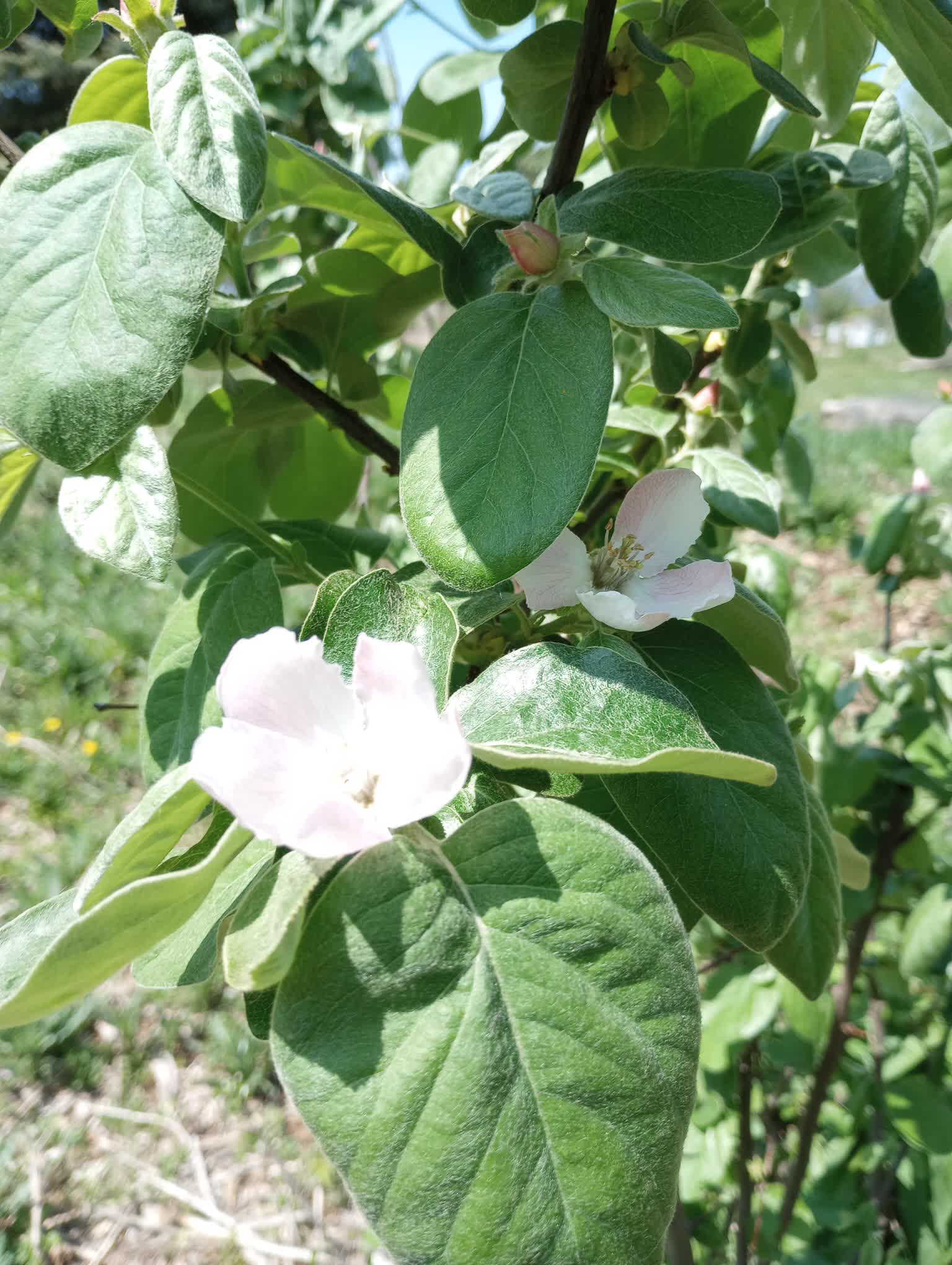
From the garden, we neglected to properly protect it from the chickens, so while they helped prepping it for next year, our harvest wasn't so good. Most of our plants did well despite this, but the chickens got first dibs on the tomatoes. In preparation for next year I laid down a layer of rotted wood chips and surrounded a row with 2 feet of chicken wire.
Gallery
 mimosa (who knew they grew in zone 5?), nitrogen fixer
mimosa (who knew they grew in zone 5?), nitrogen fixer
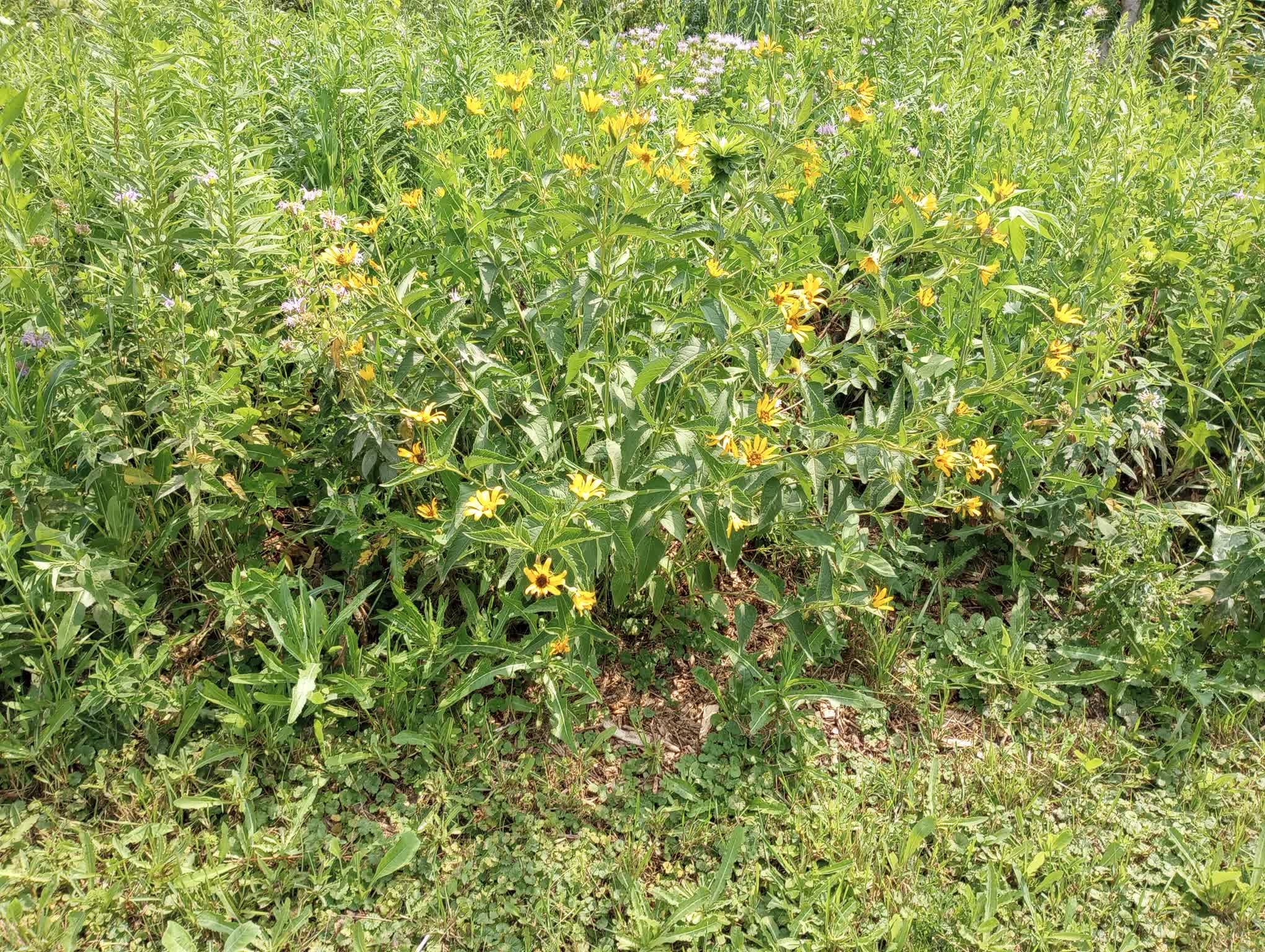 some rudbeckia?
some rudbeckia?
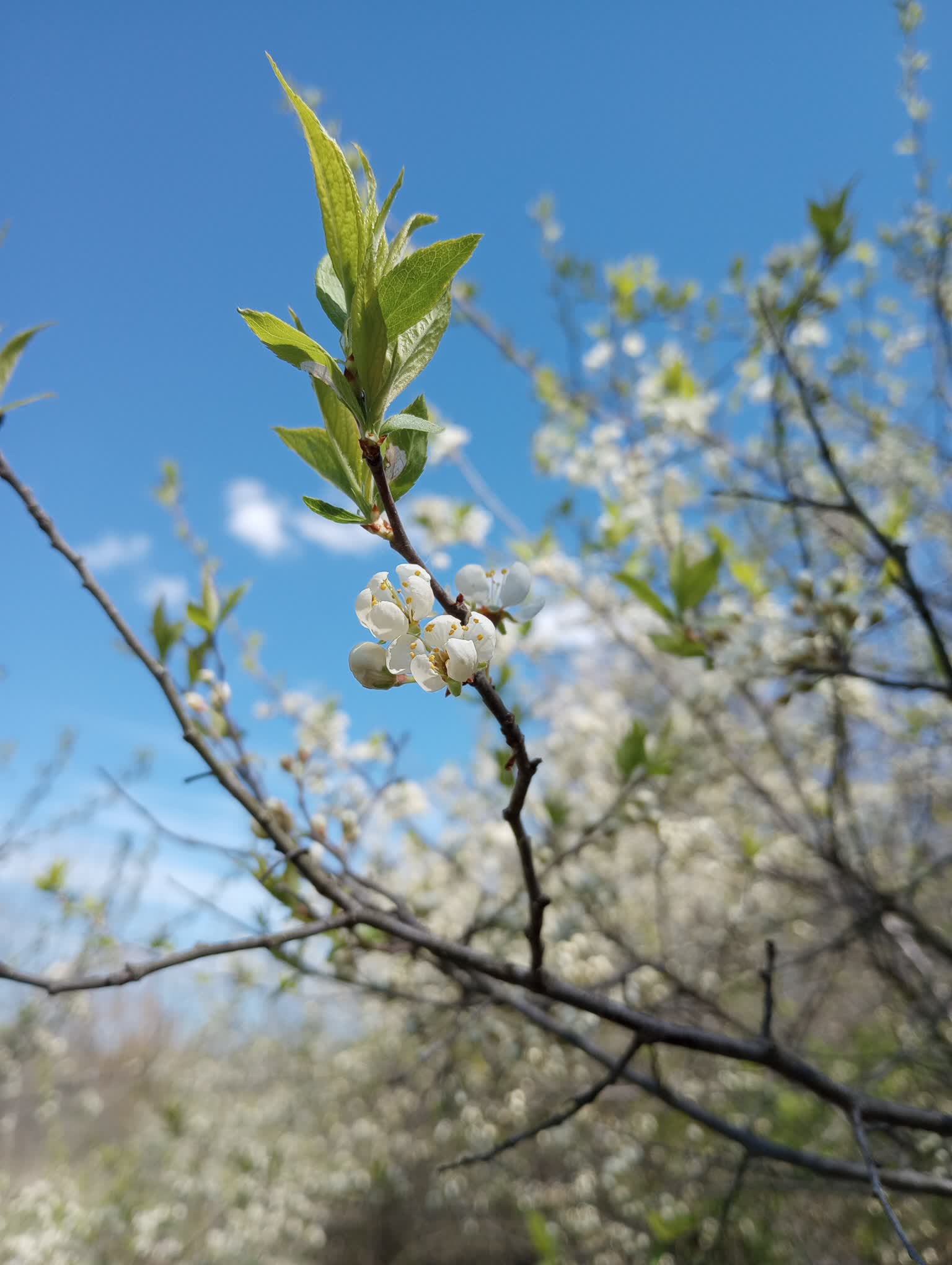 wild plum in bloom
wild plum in bloom
 violets - very pretty yet humble ground cover
violets - very pretty yet humble ground cover
 comfrey - permaculturists best friend - great noxious weed replacement
comfrey - permaculturists best friend - great noxious weed replacement
 moss in early spring
moss in early spring
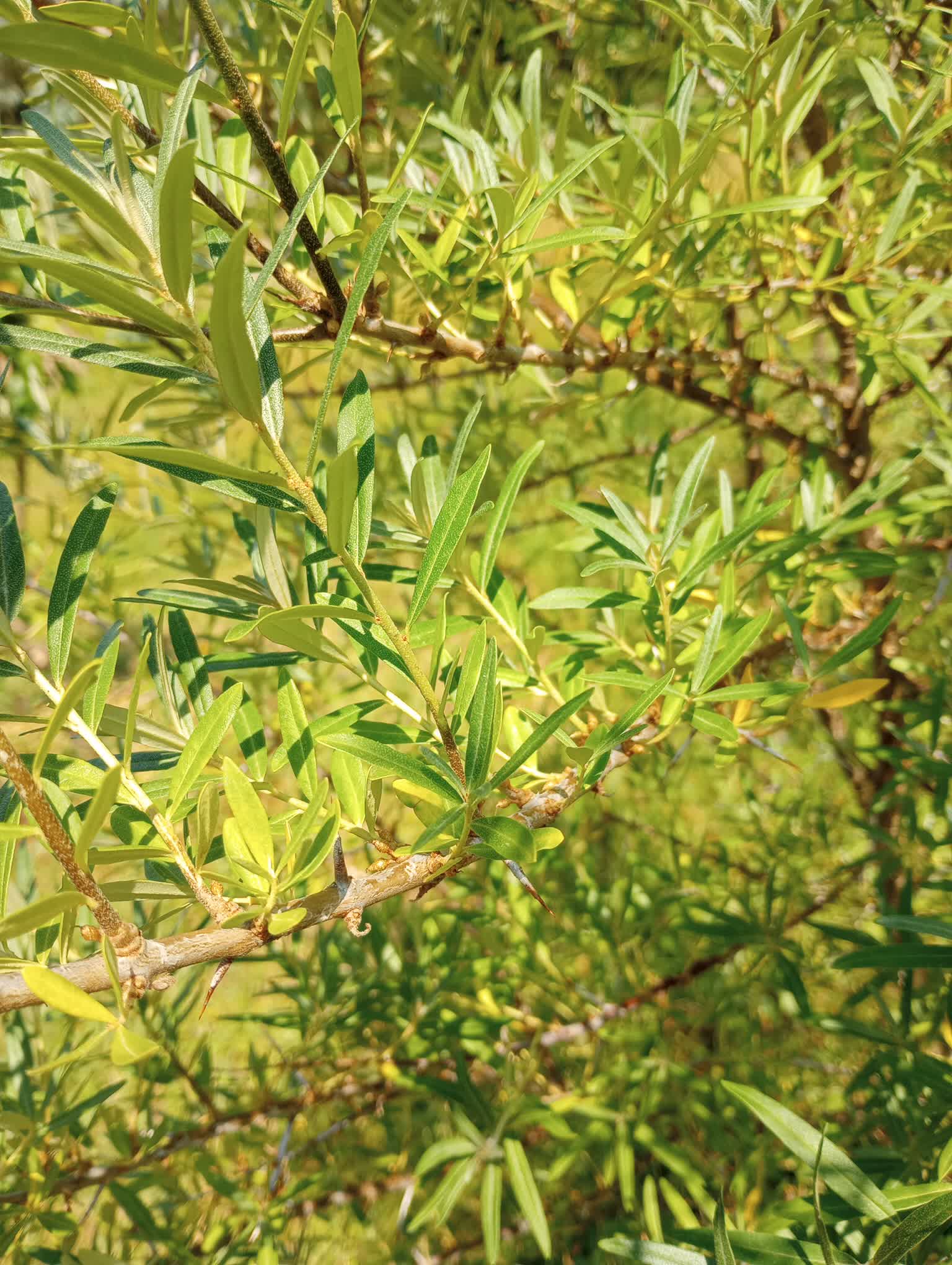 sea buckthorn - medicinal berry and nitrogen fixer - we got a few
this year!
sea buckthorn - medicinal berry and nitrogen fixer - we got a few
this year!
 What kind of caterpillar is this?
What kind of caterpillar is this?